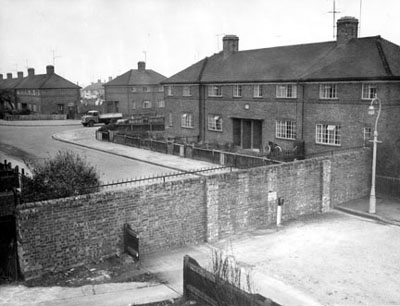
There once was a wall near my daughter’s school in Oxford. It cut off the council housing (low-income housing project) from its more affluent neighbors. Erected in 1934 by a private developer, two walls transected even the road. Following public protest, the walls were demolished in 1959, twenty-five years later. The inequities persist today.
My daughter was placed in the one school that still had openings. As we bike or walk the mile and a half to her school, we pass kids her age from this district going in the opposite direction like rats fleeing a sinking ship. There are no school buses. No city buses travel our route. We have submitted a petition requesting a transfer to our small village school, a short walk away. We have been waiting weeks for a hearing.
An Oxford academic explained that to revitalize the state schools with dwindling enrollments, all schools were open to anyone given space. Preference is given to geographic catchments. Joining late is a disadvantage.
There was no space at all in the large secondary school for her brother. The other option was a long drive away, and we heard of bullying problems there. My children are British citizens so they were not treated differently for being one-year visitors. We were able to send our son to public (ie private) school, but other families don’t have that option.
I find the lack of equity shocking in a system of national education. My daughter’s primary school includes most of the council housing population. There is widespread swearing among the students, and teachers routinely shout for order. Many children are in foster care and have difficult home situations. A large number of students are special needs.
The average mother/caretaker at school pick up time is smoking and/or wearing high heels and tight clothing with unevenly dyed hair. I consider myself a young mother, but most of the parents look ten years younger than me and have larger families. Quite a few fathers in work-clothes pick up too, even more than in Brunswick, Maine. The parents at our local school appear to be of a totally different class, age and educational level.
I’ve always considered the economically diverse student body in Maine public schools a benefit. Accepting this high degree of segregation in Oxford is not right. It makes the inequities that parents are rightly protesting in Brunswick pale by comparison. Why don’t parents complain here?
Despite the inequities, there are advantages to my daughter’s school that address our situation. Many foreign students live in the catchment area, and it is the school of choice for the few Japanese families. It has students from over 20 nations and is ethnically diverse. The school had a welcoming reception for foreign parents and does much to promote cultural sharing. They even studied the Jewish high holidays, although my daughter was the only Jew in the class.
Due to a national curriculum, all children in state school learn the same material. The school’s test results are similar to our neighborhood’s ones and average for the county. This is quite impressive given the high number of ESL students.
It helps that my daughter is not the only foreign student; there is even another American in her class. There’s a child from Georgia (the country, not the state) as well as several other countries. The girls have been very welcoming to her, and she already has had play dates with two friends whose parents are schoolteachers. All the primary schools are small with only one class per year although the class is large with 30 kids.
Math has been a challenge for my daughter mainly because the notation, term names and the system of learning are different. She was marked down for using commas and not setting her long division work into grids. I had to teach her long multiplication, long division and fraction simplification.
Math is taught sequentially in the US starting with addition then subtraction and not progressing until the basics are mastered. Understanding the concept and showing your work is as important as getting the right answer. This used to plague my son in elementary school who does math in his head and has sloppy writing. The Brits are even more upset by poor penmanship. Even math work is done in special handwriting pens.
My daughter has always done well in math and found it discouraging to have a teacher chastising her for not knowing facts that she “should have learned years ago.” The English system introduces all concepts at an early age through memorization so kindergarteners start work on multiplication but won’t understand that it is built from addition. They learn everything at once at an early age.
It appears that Americans do catch up. My son’s “maths” class is repeating material he learned last year in the advanced math class, but the pace here is twice as fast so he will be learning new stuff by mid-year.
Despite all the challenges of adjustment, my children have settled into school and are enjoying the curriculum and their new friends, if missing old friends from home. My daughter is thrilled to have a teacher who encourages creative writing, and the two girls we had over were delightful. All the children at her school have been polite and helpful when they see me. We know little of our son’s new world.
The biggest drawback of not having children in our local schools is not becoming part of the community. It makes me appreciate the wonderful experience of having my children attend a small elementary school near our house in Maine. I too made many friends and became involved in educational advocacy through that stimulation.
Small neighborhood schools can build community and encourage parental participation, but the ideal is often lost in the reality through poor management. Public/state schools should be all about equity and good education. Americans are not alone in struggling with these issues.
Photograph from Oxfordshire County Council Archive.
Great work.
ReplyDelete